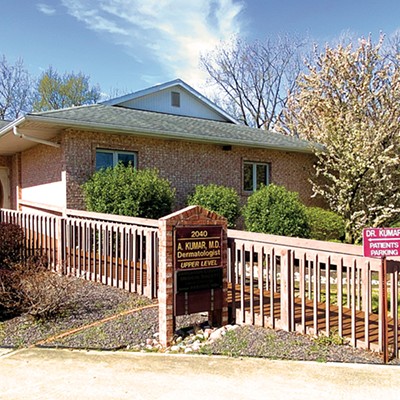A lot of the "history" we were taught in school was nothing more than fables.
Christopher Columbus didn't prove the world was round. George Washington's teeth weren't made of wood. Abraham Lincoln didn't write the Gettysburg address on the back of an envelope. The Liberty Bell didn't crack on July 4, 1776. Benjamin Franklin almost certainly didn't fly a kite in a thunderstorm.
And contrary to what we were taught in school, the socialists involved in the 1886 Haymarket Square Riot in Chicago received fair trials.
For many involved in the labor movement, that last statement is heresy. For generations, schoolchildren have been taught that the five men convicted in the incident were innocent martyrs demonstrating for an eight-hour workday who were sent to the gallows on trumped-up charges.
It makes for a compelling story. But it's also baloney.
In fact, even today, May Day, the anniversary of the riot, is the most important date on the calendar for communist and socialist parties around the globe. Red flags are waved from Copenhagen to Cape Town and from Paris to Hanoi.
The holiday has its roots here in the Land of Lincoln – in Chicago, to be precise.
As a high school student, I was taught that a group of peaceful workers demonstrating for a shorter workday were attacked by Chicago police. After some police officers were killed when a bomb exploded, innocent workers were unfairly tried and hanged.
In fact, that is what people around the world have been taught. It's a prevarication, bound up in a falsehood and wrapped in a lie.
As the Soviet revolutionary Vladimir Lenin once said, "A lie told often enough becomes the truth."
By the standards of the 1880s, it was a fair trial. In fact, it was one of the first trials where scientific forensic evidence was presented. Despite this, 19 years ago, the Illinois General Assembly spent $300,000 to erect a sculpture honoring the "victims" of the Haymarket Riot.
Of course, the "victims" are no longer just the seven police officers killed, they also include the four murderers hanged and the one who committed suicide in his jail cell.
A plaque on the monument says the men were "unfairly tried."
But a funny thing happened on the way to the Politburo.
During a lecture on the Haymarket incident, Timothy Messer-Kruse, a history professor at Bowling Green State University in Ohio, told his students the Haymarket demonstrators received an unfair trial and were convicted, despite there being no evidence against them.
"And then a student raised her hand and asked, 'If there wasn't any evidence, what was presented during that six-week trial?' It was an 'a-ha moment.' I didn't have an answer for her. I was teaching what I had been taught, but it got me wondering, and I decided to look at the original trial transcripts," he told me several years ago.
And what he found stunned him.
The trial was the longest and most exhaustive held in Illinois up to that point.
In fact, it pioneered the use of forensic evidence. A chemist compared the metallic composition of the shrapnel removed from the police officers' bodies with the bomb casings and parts found in the home of one of the defendants.
They matched.
In fact, Messer-Kruse asked a Yale University chemistry professor to use modern technology to compare the evidence today.
They still matched.
The evidence against the men was quite substantial. Their appeals were heard by both the Illinois and U.S. supreme courts.
But the political supporters of the defendants billed the men as innocent martyrs.
"The prosecutors in the case didn't have a reason to speak out after the men were executed. So, the history was largely written by those who had a political agenda to support these men," Messer-Kruse said.
By the way, Messer-Kruse is a liberal himself and a strong supporter of organized labor.
"Part of the problem is the Haymarket has become a part of labor history, and it's part of the ethos of the labor movement," he said.
In fact, no trial in Illinois history is of greater consequence than the one in which the Haymarket defendants were convicted. Their deaths are among the most commemorated in human history.
And yet, they were almost certainly guilty. They were hanged for murder – not because they demonstrated for a shorter workday.
It's time for that myth to be sliced from the history books.
Scott Reeder, a staff writer for Illinois Times, can be reached at [email protected].























